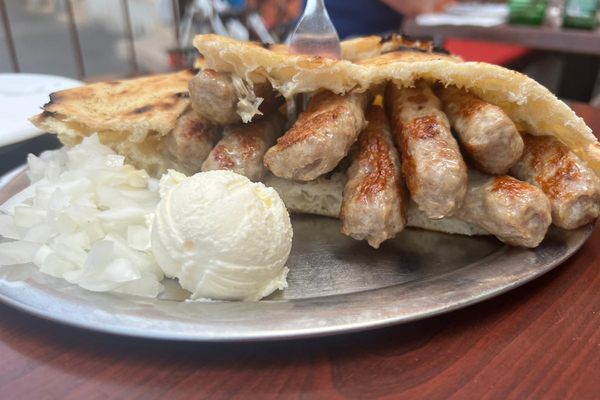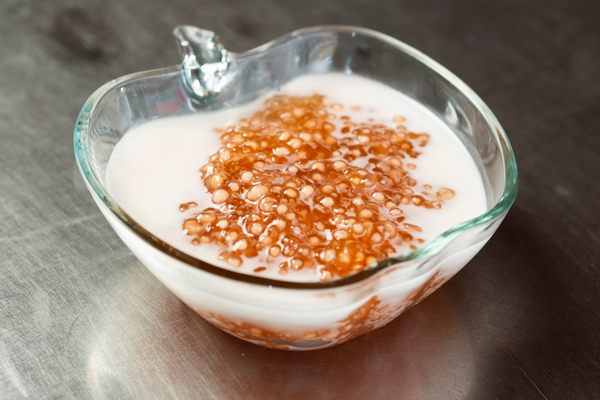7 Wild Stories From the Prohibition Era
The 18th Amendment had some unexpected side effects, from alcohol prescriptions to the rise of NASCAR.
The 18th Amendment to the United States Constitution went into effect at midnight on January 17, 1920. For 13 years, until the ratification of the 21st Amendment in December 1933, the country was officially dry—but the legacy of the Prohibition Era is less its propriety and more its flamboyant underground drinking culture, a scene populated in the public imagination by daring bootleggers, classy speakeasies, hot jazz, and cool flappers. From a century of distance, the stories of the 1920s seem like tipsy tall tales: Could a national experiment in teetotaling really have led to a U-boat plot, an ice cream craze, a federal effort to poison industrial alcohol, and NASCAR? You bet it could. Here are some of our favorite Atlas Obscura stories exploring this heavily mythologized era.
How a Group of Daring Bootleggers Created NASCAR
by Tove Danovich
Although NASCAR tries to downplay its renegade roots these days, stock car racing can trace its origins to bootleggers trying to outrun authorities, both before and during Prohibition. “Moonshiners put more time, energy, thought, and love into their cars than any racers ever will,” moonshiner and NASCAR driver Junior Johnson once said. “Lose on the track and you go home. Lose with a load of whiskey and you go to jail.”

Did German U-Boats Smuggle Alcohol Into the U.S. During Prohibition?
by Sarah Laskow
Throughout the Prohibition Era, there were rumors and newspaper reports that boats—both traditional and the underwater variety—were running rum and other spirits from Canada and the Caribbean to thirsty American shores. Among the most persistent was the idea that a giant German U-boat was “torpedoing the Eighteenth Amendment with liquor and beer,” according to a United Press report.
Why the U.S. Navy Once Had a Concrete Ice Cream Barge
by Paula Mejia
The 18th Amendment was great for the ice cream business. Between the pre-Prohibition days of 1916 to teetotaling 1925, ice cream consumption skyrocketed by 55 percent in the United States. Perhaps nowhere was the craving for frozen sweets stronger than in the U.S. Navy, which had banned alcohol on ships in 1914. The service had an enormous floating ice-cream factory and numerous “ice cream ships” that kept far-flung outposts stocked with frozen desserts.

During Prohibition, Federal Chemists Used Poison to Stop Bootlegging
by Anne Ewbank, Senior Associate Editor, Gastro Obscura
Not all alcohol was banned under the 18th Amendment: The United States still sanctioned the production of industrial alcohol, used in the production of products such as perfume and paint. The availability of this deadly intoxicant led to an unexpected war between bootleggers, who tried to redistill it into something drinkable, and the federal government, which made the concoctions ever more poisonous.
The Prohibition-Era Effort To Make Mocktails Fun
by Kristin Fawcett
In the last years of Prohibition, the Woman’s Christian Temperance Union—a staunch supporter of the 18th Amendment—made a new argument for teetotaling: mocktails that were just as fun and frothy as their banned, boozy counterparts, promoted by both social campaigners and status-conscious socialites.

The Lucrative Business of Prescribing Booze During Prohibition
by Paula Mejia
There was a legal way to buy alcohol during Prohibition: a doctor’s note. Thousands of doctors, veterinarians, pharmacists, and dentists were permitted to prescribe whiskey, scotch, and gin for all sorts of ailments, a lucrative loophole that turned the nation’s pharmacies into liquor stores in the 1920s.
How Prohibition Tossed a Wet Blanket on America’s Inventors
by Alex Mayyasi
Historians are still split over the effect Prohibition had on the consumption of alcohol overall, but researcher Mike Andrews has uncovered a surprising side effect of the closing of the country’s legal bars: The number of patents issued in the United States dropped by 15 percent. Andrews hypothesized that inventors accustomed to sharing ideas over a pint were deprived of that source of inspiration.
Gastro Obscura covers the world’s most wondrous food and drink.
Sign up for our regular newsletter.











































Follow us on Twitter to get the latest on the world's hidden wonders.
Like us on Facebook to get the latest on the world's hidden wonders.
Follow us on Twitter Like us on Facebook